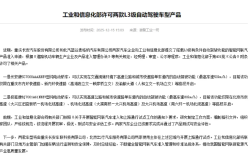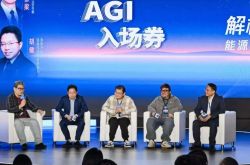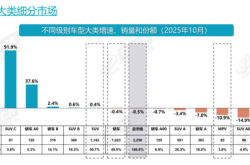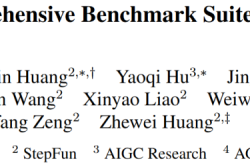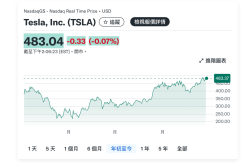Perspective on the Photonic Organization Conference: Revolutionizing Financial AI with a Computing Power Ecosystem
![]() 08/26 2025
08/26 2025
![]() 568
568
In 2025, the application of AI in the financial industry will accelerate, and the construction of information technology application innovation (Xinxuangongcheng) will enter a pivotal phase. Many financial institutions have formulated strategic plans to build AI applications centered around independent computing power bases, yet they still encounter numerous challenges in implementation.
What is the scalability of domestic computing power in the financial sector? How can we devise an integrated solution for domestic computing power plus platform applications with a high return on investment? Recently, the 2025 Photonic Organization Leaders Conference presented novel, practical insights from an ecological perspective.

Industry Status: AI Accelerates Implementation, Highlighting Computing Power Bottlenecks
In 2025, AI applications in the financial industry have transitioned from technology verification to large-scale commercial deployment. The input-output ratio has surpassed technological advancement, becoming the primary consideration for financial institutions adopting AI. Nonetheless, the financial industry also faces unprecedented challenges.
First, there is a structural dilemma in computing power resources.
Earlier this year, DeepSeek sparked a surge in demand for computing power in the financial industry, and financial institutions generally encountered computing power bottlenecks. Not only is there a shortage of computing power, but there is also a pressing need to enhance computing power efficiency, along with challenges at the data center level such as heat dissipation and power supply. Furthermore, there are operation and maintenance management challenges, including the management, scheduling, and monitoring of heterogeneous computing power resource pools.
Second, there is an urgent need to enhance independent controllability.
As a critical area related to the national economy and people's livelihood, finance places significant emphasis on information security and strengthening independent controllability. Building an independent and controllable computing power base has become a pressing issue for the industry. However, domestic computing power represents a brand-new technology system for many financial institutions, requiring time to familiarize and integrate.
Third, it is challenging to adapt diverse computing powers, models, and applications.
The mixed use of foreign and domestic computing power will persist for a considerable period, combined with diverse models and massive applications, leading to complex technology. Ensuring smooth migration while maintaining the stability of core systems and uninterrupted service experience is a significant challenge for financial institutions.
Additionally, due to financial institutions' stringent requirements for business stability and security, besides nominal computing power, they must meticulously consider factors such as software ecosystems, service capabilities, the sustainability of technical routes, mass production capabilities of computing power, as well as security and independent controllability when making choices. The decision-making process is unprecedentedly complex.
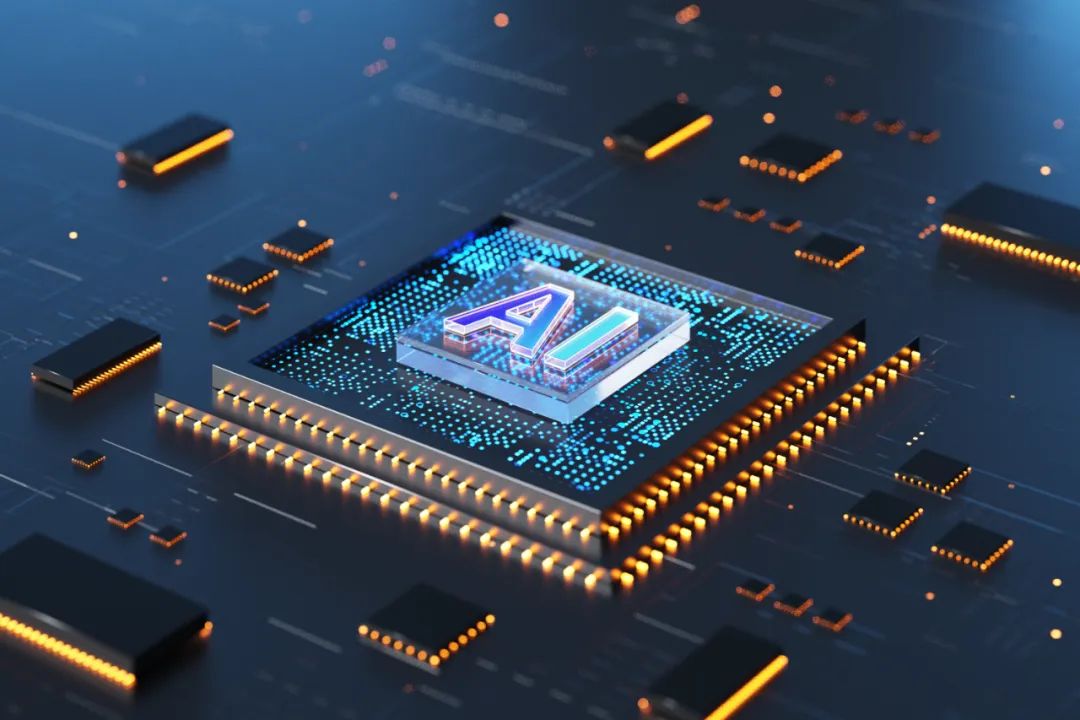
Practical Example: The Journey of AI Computing Power Reconstruction at a Large Joint-stock Bank
A large joint-stock bank's operations involve extensive intelligent document processing procedures. Previously, complex documents necessitated substantial manual verification, leading to high time costs and low processing efficiency. Concurrently, while promoting information technology application innovation and the "AI+ strategy," the bank faced dual challenges of information technology application innovation and a shortage of computing power resources.
Hygon, in collaboration with QingCloud Technology and HH Information, both members of the Photonic Organization, jointly forged a deep collaboration trinity: "hardware + platform + application." The integrated solution of Hygon DCU + QingCloud AI intelligent computing platform + HH Information intelligent document processing application has been implemented in multiple AI scenarios within the bank, including OCR, intelligent voice, and large models.
1. Foundation of Computing Power: The Robust Base of Hygon DCU
At the bottom layer, Hygon DCU provides an open, compatible, and stable domestic computing power foundation. Through atomic-level deep adaptation with upper-level platforms and applications, the chip's capabilities are optimized. Hygon DCU's leading computing power precision supports large-scale application deployment with millions of concurrent instances in financial scenarios.
2. Scheduling Hub: QingCloud Platform's "Integration"
Within financial institutions, there are often multiple vendors and heterogeneous computing power resources of different models, forming "computing power islands" with low resource utilization and complex operation and maintenance management, impacting development efficiency. QingCloud Technology serves as a pivotal "scheduling hub" for computing power resources.
"QingCloud Technology's intelligent computing platform can consolidate distributed heterogeneous computing power into a larger computing power pool for unified management, allocation, and scheduling. When computing power is managed at a finer granularity, the original computing power resources can not only support more application scenarios but also achieve higher inference efficiency," said Shen Ou, Vice President of QingCloud Technology.
3. Application Pioneer: The "Elite" Value of HH Information's Financial Document Processing
Document processing in modern financial scenarios confronts numerous challenges such as diverse formats, complex layouts, mixed handwriting, seal interference, and more. HH Information's intelligent document processing technology integrates capabilities such as deep learning, semantic understanding, and multimodal large models. It can not only recognize almost all document elements but also parse table structures, understand paragraph logic, and verify the consistency of key information, reducing processes that previously required several days of manual verification to just a few minutes.
"With the atomic-level technical support of Hygon DCU, multiple AI applications of HH Information are deeply adapted to the underlying computing power, resulting in a significant increase in intelligent document recognition rates. The recognition effect and efficiency are comparable to international computing power environments and even superior in specific scenarios," said Li Ming, General Manager of HH Information's Intelligent Solutions Business Unit.
This case breaks the traditional IT model of "separate procurement and independent operation." A "iron triangle" comprising hardware, platforms, and applications works closely with customers to jointly refine a comprehensive AI solution based on domestic computing power, setting a precedent for the financial industry in procuring domestic computing power.

Ecological Breakthrough: Software and Hardware Collaboration to Enhance Domestic Computing Power Usability
As a software and hardware ecological alliance centered on advanced computing power of "Hygon Chip," the Photonic Organization brings together over 100 AI platform, algorithm, and application vendors. It aims to leverage the synergy of software and hardware collaboration among member enterprises to create a 1+1>2 acceleration engine for the deployment of domestic computing power.
As the initiator of the Photonic Organization, Hygon has consistently adhered to the notion that "computing power should not only be robust but also user-friendly, maximizing customers' investments," thereby establishing a competitive barrier for Hygon DCU in the financial industry.
1. Compatibility with Mainstream AI Ecosystems, Lowering Implementation Thresholds
Hygon DCU adopts the international mainstream GPGPU route and achieves full compatibility with the CUDA ecosystem. The latest DTK and DAS software stacks enable customers to avoid secondary development, significantly reducing the technical threshold and migration costs. Furthermore, the Hygon DCU team has developed an end-to-end full-stack AI acceleration suite, spanning from the underlying GPU development kit DTK to the artificial intelligence basic software system DAS to the upper-level application platform DAP, leveraging platform-level software optimization capabilities to accelerate customers' AI application deployment.
2. Extensive Implementation Experience in the Financial Industry
Hygon DCU has consistently provided high-quality services to nearly 100 leading financial customers, encompassing state-owned banks, joint-stock banks, urban commercial and rural credit cooperatives, and large, medium, and small insurance and securities institutions. Through extensive practical experience, Hygon DCU has validated its technical reliability and applicability in numerous scenarios such as intelligent document processing, digital human marketing, financial anti-fraud, privacy computing, intelligent question answering, credit due diligence report generation, code generation, and enterprise knowledge bases.
3. The Photonic Organization Harnesses the Potential Energy of the Entire Industry
Only through widespread applications and the resolution of the most challenging engineering problems can the computing power ecosystem become self-sufficient and continuously thrive. In recent years, the Photonic Organization has vigorously promoted the compatibility and adaptation of China's computing power with platforms and applications, jointly nurturing a comprehensive AI solution for integrated delivery.
Conclusion
The essence of "photosynthesis" lies in ecology. In a thriving computing power ecosystem, the most critical element is not one or two leading performance indicators but building a universal, versatile, and open ecosystem to truly "utilize" computing power.
From the Photonic Organization Conference to practical applications in the financial sector, a clear path emerges: with open and compatible hardware as the cornerstone, an intelligent and efficient computing power platform as the hub, and scene-rich AI applications as the driving force, through collaborative creation within the industrial ecosystem, China's AI computing power is overcoming the "last mile" in empowering various industries.
END


